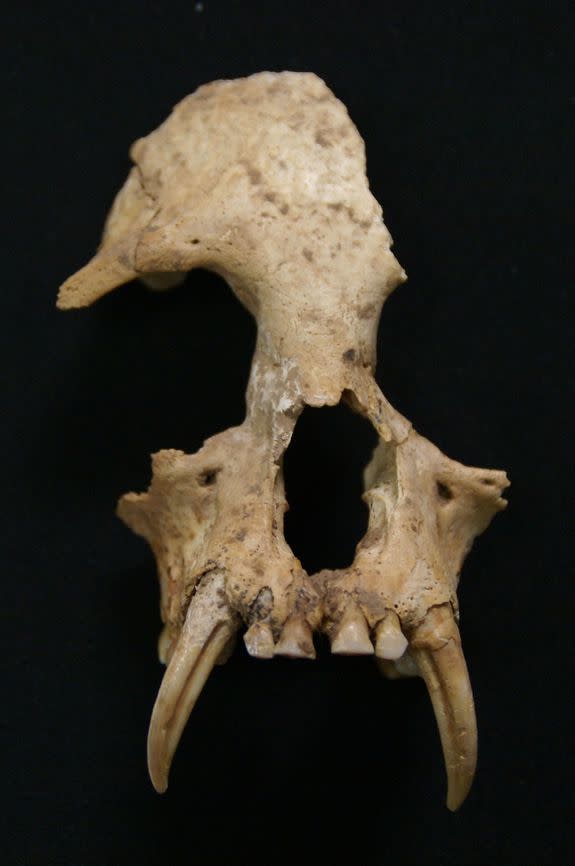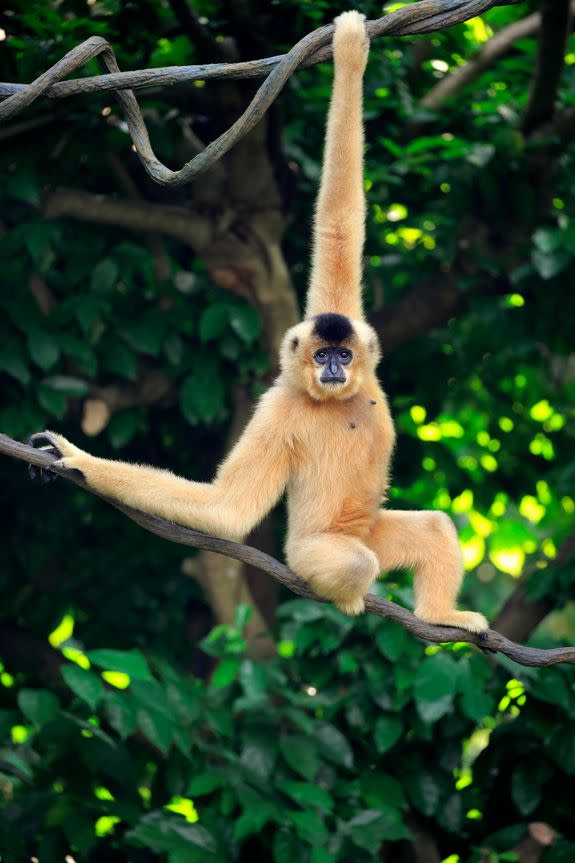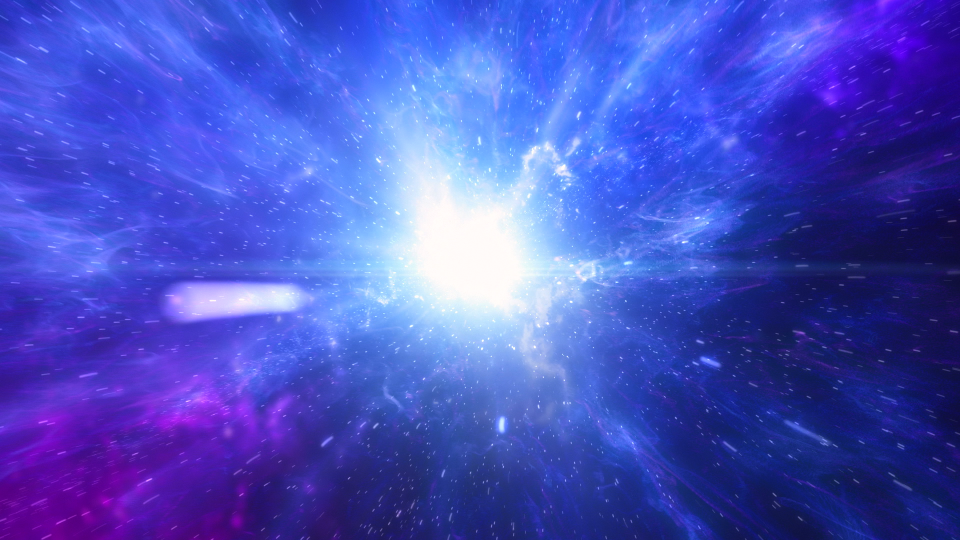An extinct gibbon was found buried in an ancient tomb. Did humans kill them off?

Inside a desk drawer at a Chinese museum, a British paleontologist came across the face and jaw bones of a long-dead gibbon in 2009.
Five years earlier, scientists had discovered the bones inside an elaborate 2,200-year-old tomb belonging to a woman of Chinese royalty. It's not unusual to find the bones of bears, leopards, and gibbons in these imperial burials, but there is something curious about these particular gibbon bones.
SEE ALSO: Why scientists think cows could be the largest animals on land in 300 years
"The specimen remains are not just a unique species, but a new genus," James Hansford, a researcher at the Zoological Society of London, said in an interview. Hansford is the co-author of a new study in the journal Science detailing the gibbon finding.
The discovery of the bygone gibbon, Junzi imperialis, is reportedly the first evidence of an ape going extinct in modern human history — since the ice age ended. The study's authors also argue that it's quite possibly the earliest evidence of a human-caused primate extinction.

Image: Samuel turvey/zsl
In the gibbon's time, humans in this imperial, developed society would have cut down forests to make room for agriculture, taken wildlife captive, and exploited largely-untouched habitats for resources.
"That would have been a death sentence for this unique gibbon," said Hansford.
It's typical for paleontologists to have few fossils to work with when identifying new species, said Hansford, but in this case, the bones were quite useful.
"We have one exceptionally preserved species because he was held in a tomb for 2,000 years — so we’re really lucky in that respect," said Hansford. The researchers scanned the bones in 3D to give them precise measurements before comparing the bones to hundreds of specimens from other known gibbons.
"It really stands out mathematically as a completely distinct animal," he said.
"The math is good — they’re employing good methodologies to do this," Trudy Turner, a primate anthropologist at the University of Wisconsin–Milwaukee who had no involvement in the study, said in an interview.
The researchers, however, couldn't remove any pieces of tooth and bone from the fossils for genetic analysis, as these gibbon remains were part of a burial, and protected from destructive scientific processes.
How did the gibbon go extinct?
It's hard to say with absolute certainty that these gibbons were driven to extinction by humans, because gibbon population records weren't kept thousands of years ago. But, the species' demise is certainly consistent with the impacts humans have on wildlife today.
"It is difficult to speak with authority about the fate of species that lived thousands of years ago, but it would not be surprising to learn that overhunting and habitat loss could have interacted to drive certain species extinct, especially species that were closely linked to a specific habitat or food source," David Steen, a wildlife ecologist, said over email.
"Today the primary threat is habitat loss, but overhunting and the introduction of disease also play important roles," Steen, who had no involvement in the study, added.

Image: Jurgen Christine Sohns/imageBROKER/REX/Shutterstock
Understanding the population history of Junzi imperialis and other primates in China is all the more challenging because there's a poor fossil record to begin with, said Hansford.
Gibbons live in forests, where dead bodies get scavenged before they can fossilize. But one thing is clear: There is no evidence that this gibbon species is around today.
So, if not humans, then what else could have killed it?
Sometimes species go extinct for reasons that aren't so obvious, said Steen.
"In these cases we cannot rule out a natural extinction, but this process is exceedingly rare and occurs over geologic time scales," he said.
But human-influenced death is a leading theory for why Junzi imperialis disappeared.
"As long as there have been humans, there’s been impacts," added Turner. "I think this is an interesting hint at human activities."
There's less doubt, however, about the state of gibbons today.
"Gibbons are undoubtedly the most endangered of all ape species and are threatened primarily by loss of their forest habitat," according to the World Wildlife Federation.
And one of the most threatened mammal species on Earth lives in southern China today.
Only about 26 Hainan gibbons remain in the wild. Perhaps, asks Hansford, these gibbons have been slowly picked off for thousands of years — not just in the last few hundred or so.
"What we have today is a more damaged population than we previously thought," he said.
WATCH: Ever wonder how the universe might end?


